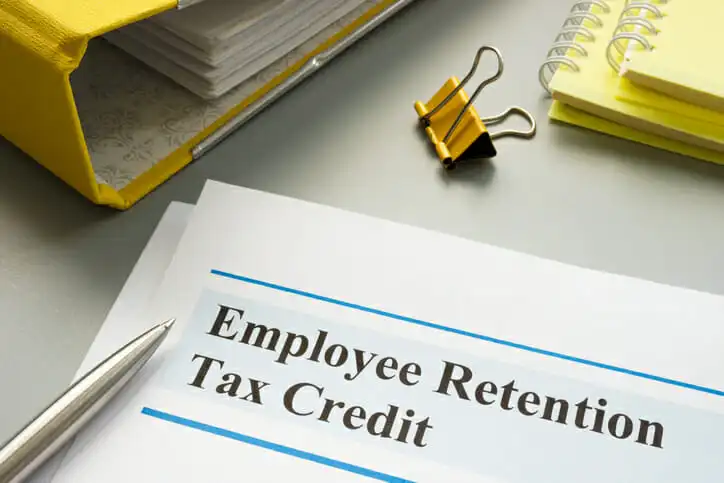Although swaths of the economy grounded to a halt in 2020 because of the COVID-19 pandemic, governments across the world worked to keep businesses afloat. In the United States, the Employee Retention Credit was part of these efforts. The Employee Retention Credit is a refundable tax credit for qualifying employee wages. Here’s what you need to know.
Consider working with a financial advisor to develop a tax plan tailored to your financial situation.
What Is an Employee Retention Tax Credit?
The Employee Retention Tax Credit (ERTC) was a tax benefit for companies that paid their employees while experiencing financial challenges due to shutdowns surrounding the COVID-19 pandemic. The ERTC can lower taxes or create a refund for employers, even if the company received a PPP Loan.
Although the ERTC applies to wages and benefits disbursed between March 13, 2020, and Sept. 30 or Dec. 31 of 2021, companies can still apply to receive the credit. While the ERTC can no longer be claimed for tax year 2020, the government is giving businesses until April 15, 2025, to submit their information for tax year 2021 and receive their refund.
In other words, the ERTC is not taxable income because it is a tax credit that can also become a refund. It is not a government loan or a source of business income. As a result, employers don’t owe taxes because of the credit in any situation.
The ERTC’s History
The ERTC functioned differently as legislation progressed during the pandemic. Initially, the CARES Act allowed qualifying employers to receive a refund of 50% of qualified wages. As a result, employers could receive a maximum of $10,000 per employee for their wages from March 13 to Dec. 31, 2020.
Then, the Consolidated Appropriations Act in 2021 let companies receive a tax credit equal to 70% of employees’ wages. Again, this percentage maxed out at $10,000 for each employee’s quarterly wages.
Finally, the government passed the American Rescue Plan Act in 2021, which maintained 70% of $10,000 of wages per employee for each quarter. While the qualifying period for this credit for most businesses ended on Sept. 30, 2021, recovery startup businesses can receive the benefit for wages paid through Dec. 31, 2021. In addition, these specific businesses can receive a tax credit maxing out at $50,000 for quarters three and four of 2021.
How Does an Employee Retention Credit Work?
The ERTC, which employers can still apply for in 2025, provides a refund of up to $7,000 per employee per quarter in 2021. (Most businesses will only qualify for quarters one through three of 2021.) Tax Form 941-X shows the dollar value of these credits for the employer each quarter. However, PPP-funded wages do not qualify for the credit.
Keep in mind, that the credit reduces a company’s Social Security and Medicare tax burdens. After reducing these taxes to zero, money left over will go to the employer as a tax refund. Furthermore, the American Rescue Plan legislation allows companies to use nonrefundable portions of the credit to lower Medicare taxes for wages paid on July 1, 2021, and after.
What Employers Qualify for the Employee Retention Credit?
The American Rescue Plan extended the ERTC to a broad range of employers, including private businesses, 501(c) organizations, educational institutions, and hospitals. In addition, taking the PPP Loan doesn’t disqualify companies from the credit.
Generally, employers who meet one of the following stipulations can receive the ERTC:
- Government shutdowns interrupted operations or decreased business hours; this condition is not applicable to essential businesses or those able to maintain business activity through virtual means
- The business’s gross revenue
The ERTC applies to quarters in which either of the above were true from March 13, 2020, through 2021. While companies can no longer claim the 2020 ERTC, they can claim the 2021 ERTC up until April 15, 2025. Remember, companies can’t claim wages paid in 2022 for the credit.
What Are Qualified Wages for the Employee Retention Credit?
For the ERTC, qualified wages are those provided to workers unable to produce value for their employers or during a quarter in which gross revenue fell. The ERTC provides a refund for $10,000 of wages per employee in each qualifying quarter between March 13, 2020, and the third or fourth quarter of 2021, depending on the business type.
In addition, the law includes tips as qualified wages if the employee received over $20 per month in tips. However, if the tips were not significant enough to count for FICA taxes (i.e., less than $20 per month), the tips aren’t qualified wages.
Assessing an Employer’s Size for ERTC Purposes

It’s vital for employers to understand whether they are large or small under the ERTC definition because small employers can count all their employees whether they stopped producing services or not. On the other hand, large employers only receive the ERTC for employees who stopped producing services.
For 2021, an employer that averaged 500 or fewer full-time employees in 2019 is considered small. Furthermore, a full-time employee in this context is an employee who averaged 30 work hours per week in 2019.
ERTC Retroactive Termination and ERTC Impacts on Other Credits and Funding
Some employers may have decreased their employment tax payments under the assumption they would receive the ERTC for the fourth quarter of 2021. Because legislation changed the ERTC to solely apply to Recovery Startup Businesses for the last quarter of 2021, your business might have received a premature ERTC payment for 2021 that you’ll need to return.
A business that filed “Form 7200, Advance Payment of Employer Credits Due to COVID-19” is likely in this situation. Your tax forms should contain relevant information on ERTC retroactive termination. It’s crucial to repay this deposit as soon as possible; businesses that delay paying will face financial penalties.
The ERTC prevents employers from receiving paid family medical leave (FMLA) tax credits for the same wages used to elicit the ERTC. In other words, employers can’t use the same wages for these two credits and must choose between them. In addition, employees’ wages under the Work Opportunity Tax Credit are likely ineligible for the ERTC. And remember, employers can’t use wages paid through PPP funding to qualify for the ERTC.
Bottom Line

The ERTC helps companies that suffered financially because of COVID-19 lockdowns. If you own a business and have yet to claim your tax credit, you have until April 2025. However, the credit can only be claimed for the 2021 tax period. The window to claim the credit for 2020 has already closed. It’s important to gather your receipts and full-time employee information to ensure you receive the available tax credit. You might even receive a refund after the credit lowers your Social Security and Medicare taxes.
Tips on the Employee Retention Credit Taxable Income
- If you’re a business owner wading through complex taxes, a financial advisor can help you understand how to navigate tax laws. Finding a financial advisor doesn’t have to be hard. SmartAsset’s free tool matches you with up to three vetted financial advisors who serve your area, and you can have a free introductory call with your advisor matches to decide which one you feel is right for you. If you’re ready to find an advisor who can help you achieve your financial goals, get started now.
- Legislation during the COVID-19 pandemic allowed employers to suspend payroll taxes. However, with the economy recovering from lockdowns, understanding payroll taxes and how they’re paid is critical.
Photo credit: ©iStock/designer491, ©iStock/Delmaine Donson, ©iStock/Andrii Dodonov
